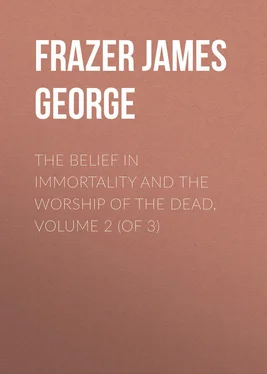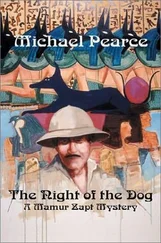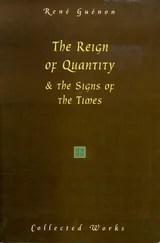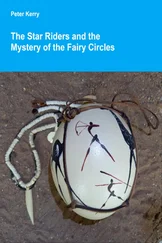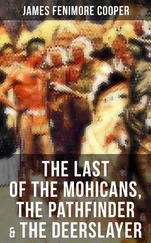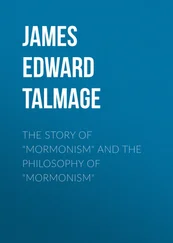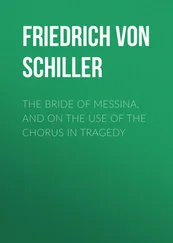James Frazer - The Belief in Immortality and the Worship of the Dead, Volume 2 (of 3)
Здесь есть возможность читать онлайн «James Frazer - The Belief in Immortality and the Worship of the Dead, Volume 2 (of 3)» — ознакомительный отрывок электронной книги совершенно бесплатно, а после прочтения отрывка купить полную версию. В некоторых случаях можно слушать аудио, скачать через торрент в формате fb2 и присутствует краткое содержание. Жанр: foreign_antique, foreign_prose, на английском языке. Описание произведения, (предисловие) а так же отзывы посетителей доступны на портале библиотеки ЛибКат.
- Название:The Belief in Immortality and the Worship of the Dead, Volume 2 (of 3)
- Автор:
- Жанр:
- Год:неизвестен
- ISBN:нет данных
- Рейтинг книги:3 / 5. Голосов: 1
-
Избранное:Добавить в избранное
- Отзывы:
-
Ваша оценка:
- 60
- 1
- 2
- 3
- 4
- 5
The Belief in Immortality and the Worship of the Dead, Volume 2 (of 3): краткое содержание, описание и аннотация
Предлагаем к чтению аннотацию, описание, краткое содержание или предисловие (зависит от того, что написал сам автор книги «The Belief in Immortality and the Worship of the Dead, Volume 2 (of 3)»). Если вы не нашли необходимую информацию о книге — напишите в комментариях, мы постараемся отыскать её.
The Belief in Immortality and the Worship of the Dead, Volume 2 (of 3) — читать онлайн ознакомительный отрывок
Ниже представлен текст книги, разбитый по страницам. Система сохранения места последней прочитанной страницы, позволяет с удобством читать онлайн бесплатно книгу «The Belief in Immortality and the Worship of the Dead, Volume 2 (of 3)», без необходимости каждый раз заново искать на чём Вы остановились. Поставьте закладку, и сможете в любой момент перейти на страницу, на которой закончили чтение.
Интервал:
Закладка:
In the Marquesas islands the morais appear to have been also used occasionally or even regularly as burial-places. Langsdorff, one of our earliest authorities on these islands, speaks of a morai simply as a place of burial. 295 295 G. H. von Langsdorff, op. cit. i. 115.
He tells us that the mummified bodies of the dead were deposited on scaffolds in the morai or family burial-place, and that the people of neighbouring but hostile districts used to try to steal each other's dead from the morais , and deemed it a great triumph when they succeeded in the attempt. To defeat such attempts, when the inhabitants of a district expected to be attacked in force by their enemies, they were wont to remove their dead from the morai and bury them in the neighbourhood. 296 296 G. H. von Langsdorff, op. cit. i. 134.
Again, in their monograph on the Marquesas islands, the French writers Vincendon-Dumoulin and Desgraz recognise only the mortuary aspect of the morais . They say: "The morais , funeral monuments where the bodies are deposited, are set up on a platform of stone, which is the base of all Nukahivan constructions. They are to be found scattered in the whole extent of the valleys; no particular condition seems to be required in the choice of the site. Near the shore of Taïohae is the morai which contains the remains of a brother of the atepeïou Patini , an uncle of Moana, who died some years ago, as they tell us." 297 297 Vincendon-Dumoulin et C. Desgraz, Îles Marquises ou Nouka-hiva (Paris, 1843), p. 253.
Thus to some extent, in function as well as in form, these pyramidical temples of Tahiti and the Marquesas islands corresponded to the megalithic monuments of the Tooitongas or sacred chiefs of Tonga; in fact, they were mausoleums as well as temples. We are not at liberty to assume, with one authority on the Polynesians, that they were mausoleums first and foremost, and that they only developed into temples at a later time. 298 298 C. E. Meinicke, Die Inseln des Stillen Oceans , ii. 180.
It is possible, on the contrary, that from the outset they were temples dedicated to the worship of the high gods, and that the custom of depositing the dead in them was a later practice adopted for the sake of the protection which these holy places might be expected to afford against the efforts of enemies to carry off and desecrate the remains of the departed. Dr. Rivers propounded a theory that the custom of building these megalithic monuments in the form of pyramids was introduced into the Pacific by a people who brought with them a secret worship of the sun, and he apparently inclined to regard the monuments themselves as at least associated with that worship. 299 299 W. H. R. Rivers, "Sun-cult and Megaliths in Oceania," American Anthropologist , N.S. xvii. (1915) pp. 431 sqq.
The theory can hardly apply to the megalithic monuments of the Tooitongas in Tongataboo; for the evidence which I have adduced seems to render it certain that these monuments were erected primarily as tombs to receive the bodies of the sacred chiefs. It is true that these tombs enjoyed a sacred character and were the scene of worship which justly entitles them to rank as temples; but so far as they were temples, they were devoted to the worship, not of the sun, but of the dead.
Thus our enquiry into the meaning and origin of these interesting monuments entirely confirms the view of the shrewd and observant Captain Cook that the fiatookas , as the Tongans called them, were both places of burial and places of worship.
Finally, the evidence which I have cited appears to render it highly probable that these imposing monuments were built, not by a prehistoric people, predecessors of the Tongans in the islands, but by the Tongans themselves; for not only do the people affirm that the tombs were erected by their ancestors, but they have definite traditions of some of the chiefs who built them, and are buried in them; and they still profess to remember some of the islands from which the huge stones were brought to Tongataboo in great double canoes.
That the graves of the great chiefs were, like temples, regarded by the people with religious reverence appears plainly from a statement of Mariner. He tells us that a place called Mafanga, in the western part of Tongataboo, being a piece of land about half a mile square, was consecrated ground. "In this spot," he says, "are the graves where the greatest chiefs from time immemorial have been buried, and the place is therefore considered sacred; it would be a sacrilege to fight here, and nobody can be prevented from landing: if the most inveterate enemies meet upon this ground, they must look upon each other as friends, under penalty of the displeasure of the gods, and consequently an untimely death, or some great misfortune. There are several of these consecrated places on different islands." 300 300 W. Mariner, Tonga Islands , i. 88.
Thus the reverence paid to the tombs of the chiefs was like the reverence paid to the consecrated houses and enclosures of the gods; we have already seen what a sacrilege it was deemed to fight or to pursue an enemy within the consecrated enclosure of a god, 301 301 Above, pp. 74 sqq.
and we now learn that it was equally a sacrilege to fight within the ground that was hallowed by the graves of the chiefs.
Mariner has described for us the worship paid by the king and his chiefs to one of the sacred graves at Mafanga. One morning Finow the king, accompanied by several of his chiefs and their ministers (the matabooles ), landed at Mafanga and immediately proceeded to his father's grave to perform a ceremony called toogi . Mariner attended the party and witnessed the ceremony. All who went to participate in it assumed the attire of mourners or suppliants, that is, they wore mats instead of their usual dress and they had wreaths, made of the leaves of the ifi tree, round their necks. They sat down before the grave, and the king and all of them beat their cheeks with their fists for about half a minute without speaking a word. One of the principal ministers ( matabooles ) then addressed the spirit of the king's father to the following effect: "Behold the man (meaning Finow, the king) who has come to Tonga to fight his enemies. Be pleased with him, and grant him thy protection. He comes to battle, hoping he is not doing wrong. He has always held Tooitonga in the highest respect, and has attended to all religious ceremonies with exactness." One of the attendants then went to the king and received from him a piece of kava root, which he laid down on the raised mount before the burial-place ( fytoka ). Several others, who had pieces of kava root in their bosoms, went up to the grave in like manner and deposited them there. 302 302 W. Mariner, Tonga Islands , i. 88 sq.
Thus the king prayed to the spirit of his dead father at his grave and made an offering at the tomb. What more could he do to a god at his temple? And in general we are told that when a great blessing was desired, or a serious evil deprecated, if the people wished to enjoy health or beget children, to be successful at sea, or victorious in war, they would go to the burial grounds of their great chiefs, clean them up thoroughly, sprinkle the floor with sand, and lay down their offerings. 303 303 Sarah S. Farmer, Tonga and the Friendly Islands , p. 127.
When Finow the king was dying, his friends carried him on a bier, not only to the temples of the great gods Tali-y-Toobo and Tooi-fooa-Bolotoo, where prayers for his recovery were offered; they bore him also to the grave of a chieftainess and invoked her spirit in like manner to pity and spare the expiring monarch. 304 304 W. Mariner, op. cit. i. 367.
Apparently they thought that the ghost of the chieftainess was quite as able as the great gods to heal the sick and restore the dying.
Интервал:
Закладка:
Похожие книги на «The Belief in Immortality and the Worship of the Dead, Volume 2 (of 3)»
Представляем Вашему вниманию похожие книги на «The Belief in Immortality and the Worship of the Dead, Volume 2 (of 3)» списком для выбора. Мы отобрали схожую по названию и смыслу литературу в надежде предоставить читателям больше вариантов отыскать новые, интересные, ещё непрочитанные произведения.
Обсуждение, отзывы о книге «The Belief in Immortality and the Worship of the Dead, Volume 2 (of 3)» и просто собственные мнения читателей. Оставьте ваши комментарии, напишите, что Вы думаете о произведении, его смысле или главных героях. Укажите что конкретно понравилось, а что нет, и почему Вы так считаете.
